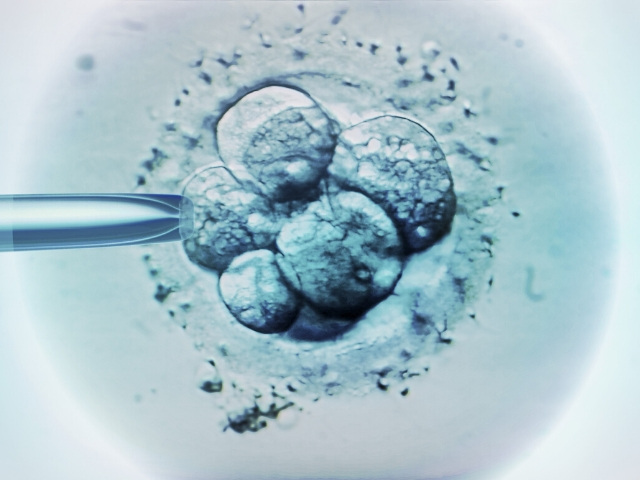In the modern era, women tend to get married later and give childbirth even later. Pregnancy in a woman becomes difficult after 35 years of age. The chromosomal abnormalities can occur along with difficulty in conceiving. Some women may have a problem related to the dysfunction of the female reproductive system. These issues can be overcome through many scientific techniques like IVF which uses the embryo transfer process.
All You Need to Know About Embryo Transfer
What is an Embryo Transfer?
Embryo transfer is the last stage of the in-vitro fertilization technique. Transferring a fertilized embryo to the uterus of the woman is a crucial step in this technique. During IVF, fertility medications help in stimulating the ovaries to release healthy eggs or ovum. These healthy eggs are taken from a woman’s ovaries and then fertilized outside her body in the lab. Once the fertilized ovum starts multiplying, they are transferred soon back to the woman’s uterus. As the pregnancy begins, the embryo gets attached to the wall of the uterus on its own.
What is the Procedure of Embryo Transfer?
The embryo transfer process is quite similar to the pap smear process. Insertion of the speculum in the woman’s vagina by the doctor to keep the walls of the vagina open. Through ultrasound, the doctor can pass a catheter in the uterus via the cervix.
The embryo transfer process is painless and thus requires no sedatives. Insertion of speculum may cause discomfort in some women or due to full bladder, required for an ultrasound. The Process is of short duration and bladder can be emptied immediately.
What to expect before, during, and after an Embryo Transfer?
Before Embryo Transfer
Just two-three days before the embryo transfer, the doctor chooses the best ovum suitable for transfer to the uterus of the woman. Many non-invasive processes can be performed to aid selection. One such method is Metabolic profiling, it is a process through which the most beneficial egg is selected based on several factors. Such methods link the use of invasive procedures in the future.
Now then eggs are fertilized in the laboratory and introduced in the culture media for 1 to 2 days. If the conditions are favorable, the good quality embryos develop while the others which are not transferred are frozen.
During Transfer
Embryo transfer procedure requires only 15 minutes to complete and this completion is attained through the insertion of the catheter in the uterus via the cervix.
After the Embryo Transfer Process
It is recommended to have followed up appointment after 2 weeks of transfer to ensure the proper implantation of the embryo. Soon after the procedure a woman may experience cramping or bloating or even vaginal discharge.
Types of Embryo Transfer
As soon as the fertilization is completed, the embryo can be transferred through the following ways :
Fresh Embryo Transfer
As the eggs are fertilized and cultured for 1-2 days, the best embryos are selected and transfer to the uterus of the woman.
Blastocyst Embryo Transfer
In this technique, the healthy embryos formed due to fertilization are kept under observation until they grow into blastocysts. Later these blastocysts are transferred into the uterus. It has been observed that this blastocyst embryo transfer has a higher success rate than the standard embryo transfer. But this technique can cause post-pregnancy-related complications and hence it is not recommended.
Frozen Embryo Transfer
Many a time the healthy embryos not used for transfer are crossed and stored for future purpose. Such embryos are preserved for the next pregnancy if required.
Assisted Hatching
This process is defined as assisted hatching of the embryo I.e. tweaking of the outermost layer of the embryo before it’s transferred to the uterus. This technique does not improvise pregnancy or implantation rates in women having fresh embryos transferred but in women with frozen embryos implantation is benefitted through this.
When to go for Embryo Transfer?
Embryo transfer is required in those females where natural fertilization is not possible or is difficult. Such conditions are :
- Ovarian disorders
- Uterine fibroids
- Blockage of the fallopian tube
- Endometriosis
- Premature ovarian failure
- Genital anomalies
- Impaired sperm production
Risks and Precautions
- The risk of embryo transfer is low.
- A woman may experience bleeding or vaginal discharge or infection as complications of the anesthesia.
- Here the risk of miscarriage is the same as in normal conceptions
- The risk of stillbirth and disabled children is high and common in IVF pregnancies when compared to natural conceptions.
- Chances of thrombosis are high in such pregnancies as these are mostly related to increased hormonal stimulation.
Conclusion
The success rate of the embryo transfer is dependent upon its procedure. Such techniques have provided opportunities for many couples to turn into parents and complete their families.
Sources:













